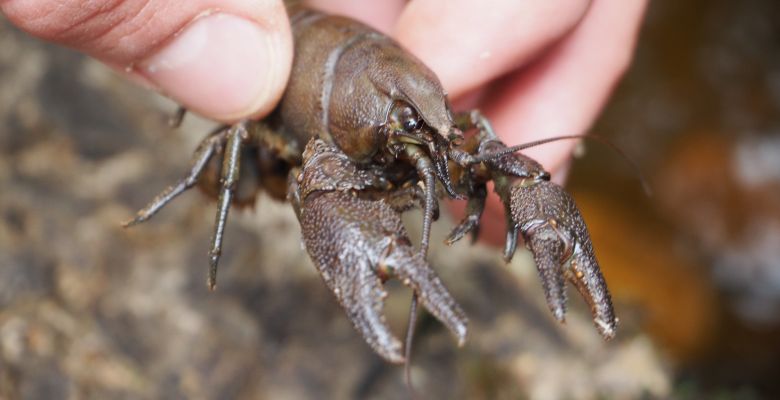You may be aware of the conservation threats to our native red squirrel from the American grey squirrel however, you may not have heard of the threats to our native white-clawed crayfish, from the introduced American signal crayfish.
The signal crayfish are native to North America, the problem began as the species was intentionally introduced to the UK in 1970’s as a valuable food export. While harmless in their natural environment, these American invaders are harmful to the British ecology as they are indirectly killing our native species.
As well as out competing the white-clawed crayfish for resources, the signal crayfish carries the crayfish plague, a fungal disease caused by a water mold called Aphanomyces astaci, which they are immune to, but kills our native species. This is exacerbated by the fact that the spores of this mold can be carried by water currents downstream, infecting the white-clawed crayfish before the signal crayfish even spread to that area. Leaving the few crayfish that may survive the plague often weaker and more susceptible to being out-competed by the larger, more aggressive American species. The spores of crayfish plague can also be transported on wet clothes and equipment, remaining active on damp gear for as long as 22 days, thus reaching areas which the signal crayfish may not have affected at all.
As a result of this pressure, the white-clawed crayfish population has greatly declined over the past few decades. Despite this threat, a few strongholds for white clawed crayfish populations remain in clean, well-oxygenated rivers and lakes. EcoNorth staff attended a course in order to gain experience in white-clawed crayfish surveying and learn all about this ‘salsa dancing’ crustacean. So that we can better protect our only native freshwater crayfish species.
As well as learning about crayfish ecology and biosecurity, we had the opportunity to receive valuable hand on experience with field survey methods, focusing stone turning.
As the white-clawed crayfish is a nocturnal species, during the day they are mostly resting and hiding under rocks and river banks (hence the survey name stone turning!). In each section we turn a set number of stones to keep results consistent.
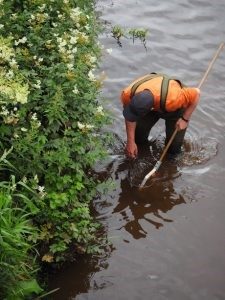
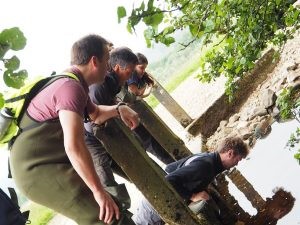
When we find a crayfish under a stone, we use our hands and net to capture them, often using the rivers current to guide them toward the net as they try to escape. We then move them in trays so we can count, identify and measure them.
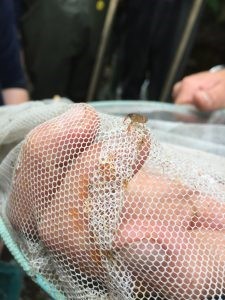
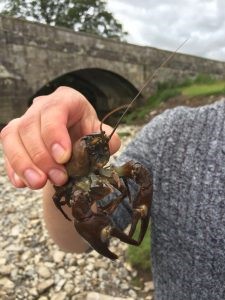
The best way to identify a white-clawed crayfish is feeling for a small spike on the side of their head. We can also differentiate between males and females by looking at their reproductive organs located in the abdomen. It is of course essential to correctly identify the species of crayfish you are dealing with, whereas knowing the sex ratio can be a good indication of the health of the population.
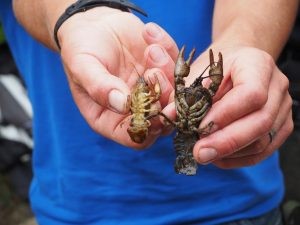
The size a crayfish is good indication of their age. Large crayfish can be indicative that the crayfish in that area are living long, healthy lives. Finding really small crayfish can also be a positive sign as it indicates successful reproduction.
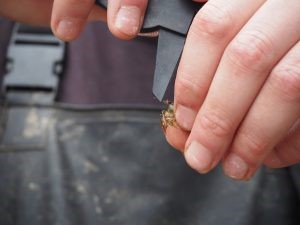
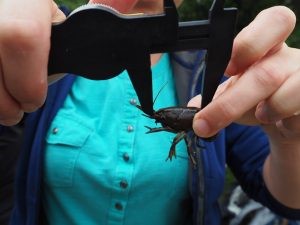
Throughout this process it is essential we ensure that no white-clawed crayfish is harmed, after all we want to protect them. After gathering all the data, we carefully release them in the same area they were found. We can also mark the crayfish before releasing them so we can gather data on population numbers and movement patterns.
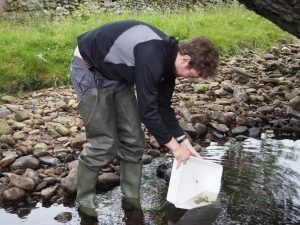
During the trip, some us got to show off our great botanical knowledge.
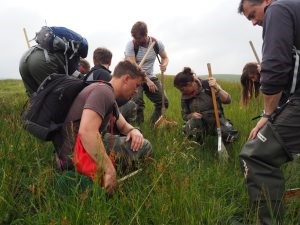
And some us got to show of our Pizza making skills.

Some of the team had prior experience with crayfish surveys. Now with all of the team trained and a white-clawed crayfish license in place, we can quickly and efficiently gather a wealth of data on crayfish surveys. This data enables us to provided expert advice and to create innovative solutions for ecological constrains.

